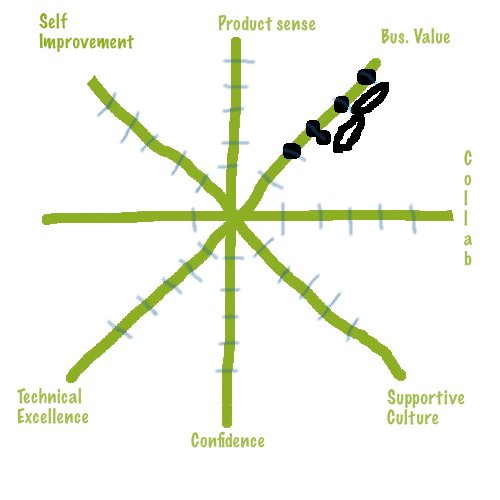The “collaboration” pillar (version 1)
Part of a series on the seven pillars of a good Agile team
In the world of software, there are two competing slogans:
- “Many heads are better than one.”
- “A committee is the only form of life with many heads and no brain.”
In a skilled Agile team, the first slogan wins. It is routine for two or more people to do better work together than any of them could do alone.
Some evidence of collaboration
-
Pair programming.
-
People frequently wave over other people to ask them questions or to seek help. Especially significant are “cross-disciplinary” conversations where a programmer waves over a tester or a user experience designer waves over a programmer.
-
People frequently go to the product owner to ask small questions, rather than bunching questions up into marathon sessions.
-
The code isn’t divided into subsystems that “belong” to someone and that other people dare not change.
-
There are “big visible charts” or “information radiators” that everyone can easily see, that track data of interest to the team, and that actually get updated on time.
-
“The best person for the task” will sometimes not do it—at least not alone. People are accustomed to reaching out past their own specialty.
-
The words “That’s none of your business” are neither spoken nor implied. The team errs on the side of visibility.



